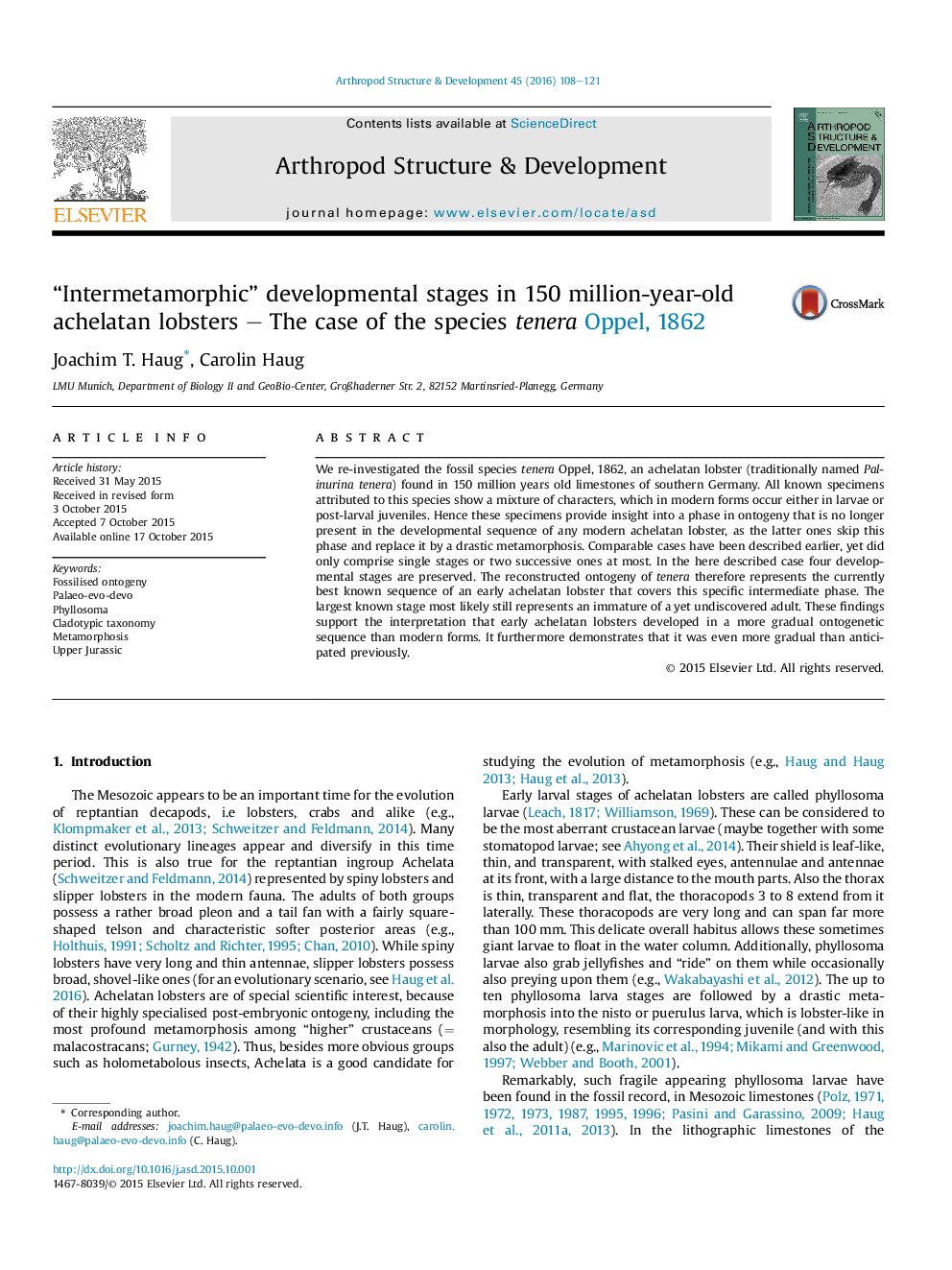| Article ID | Journal | Published Year | Pages | File Type |
|---|---|---|---|---|
| 2778490 | Arthropod Structure & Development | 2016 | 14 Pages |
•All fossils, presumed adults, of the achelatan lobster tenera are immatures.•These immatures show a mixture of larval and post-larval traits in one specimen.•Such an ontogenetic phase is not known from any modern achelatan lobster.•Early achelatan lobsters developed much more gradually than modern ones.
We re-investigated the fossil species tenera Oppel, 1862, an achelatan lobster (traditionally named Palinurina tenera) found in 150 million years old limestones of southern Germany. All known specimens attributed to this species show a mixture of characters, which in modern forms occur either in larvae or post-larval juveniles. Hence these specimens provide insight into a phase in ontogeny that is no longer present in the developmental sequence of any modern achelatan lobster, as the latter ones skip this phase and replace it by a drastic metamorphosis. Comparable cases have been described earlier, yet did only comprise single stages or two successive ones at most. In the here described case four developmental stages are preserved. The reconstructed ontogeny of tenera therefore represents the currently best known sequence of an early achelatan lobster that covers this specific intermediate phase. The largest known stage most likely still represents an immature of a yet undiscovered adult. These findings support the interpretation that early achelatan lobsters developed in a more gradual ontogenetic sequence than modern forms. It furthermore demonstrates that it was even more gradual than anticipated previously.
